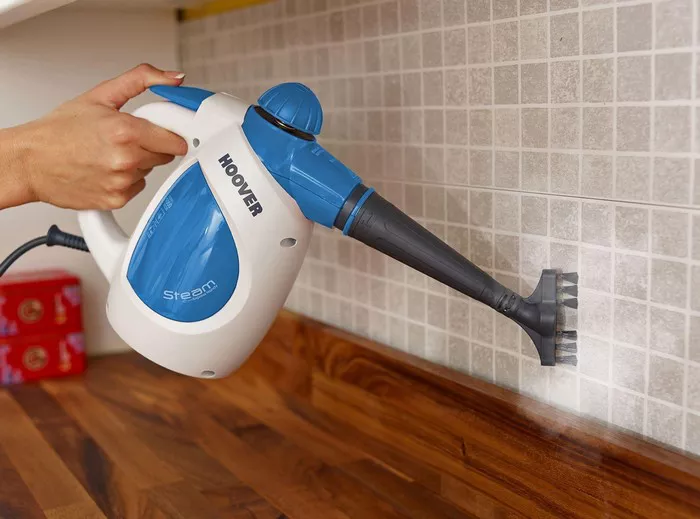Steam mops have become a popular choice for cleaning floors. They offer an effective way to sanitize and refresh various types of flooring. However, many people wonder what cleaner is best to use with a steam mop. The answer is not straightforward, as it depends on several factors, including the type of flooring and the specific cleaning task. In this article, we will explore what cleaners you can use with a steam mop and provide tips for optimal results.
Understanding Steam Mops
How Steam Mops Work
Steam mops use high temperatures to create steam, which helps to break down dirt and grime. The steam penetrates surfaces, loosening debris and killing bacteria. This process makes steam mops an effective cleaning tool. The heated steam can reach temperatures of up to 200 degrees Fahrenheit. This heat can sanitize surfaces without the need for harsh chemicals.
Benefits of Using a Steam Mop
One significant advantage of steam mops is their ability to clean and sanitize simultaneously. They can eliminate up to 99.9% of germs and bacteria, making them a great choice for homes with children or pets. Steam mops are also environmentally friendly. They often require little to no cleaning solution, reducing the need for chemicals that can be harmful to the environment.
What Cleaners Can You Use?
Water Only
For many users, water alone is sufficient. Tap water can effectively generate steam and help lift dirt and grime. This is especially true for light cleaning tasks. If your floors are not heavily soiled, using just water can be an efficient choice. Make sure to fill the steam mop’s reservoir with clean water. Distilled water is preferred, as it helps prevent mineral buildup in the machine.
Steam Mop Solutions
Many manufacturers offer specific cleaning solutions designed for steam mops. These solutions are often formulated to enhance the cleaning power of steam. They can help tackle stubborn stains and provide a pleasant scent. When using a commercial steam mop solution, ensure it is compatible with your specific model. Always read the manufacturer’s instructions before use.
Homemade Cleaners
If you prefer a DIY approach, homemade cleaners can be an excellent option. A common recipe involves mixing equal parts of vinegar and water. This mixture can help dissolve grease and grime. However, it’s essential to check if vinegar is safe for your flooring type, as it can damage some surfaces like hardwood. Another popular option is to mix a few drops of dish soap with water. This combination can help lift dirt effectively.
Consider Your Flooring Type
Hardwood Floors
When cleaning hardwood floors, caution is essential. Steam can warp and damage wooden surfaces if used excessively. For hardwood, it’s best to use water only or a cleaner specifically designed for hardwood floors. Many manufacturers offer pH-neutral cleaners that are safe for wood surfaces. Always follow the manufacturer’s recommendations for cleaning products.
Tile and Grout
Steam mops work exceptionally well on tile floors. The high temperature can penetrate grout lines, effectively loosening dirt and stains. For extra cleaning power, consider using a tile cleaner specifically designed for use with steam mops. Look for products that are safe for both tile and grout.
Carpet and Rugs
Some steam mops have attachments designed for cleaning carpets and rugs. However, it’s crucial to avoid using traditional floor cleaners with these attachments. Instead, use a carpet cleaning solution designed for steam cleaners. These solutions help lift stains and freshen carpets while being gentle enough not to damage fibers.
Laminate Floors
Laminate floors can also benefit from steam mops. However, it’s crucial to avoid excessive moisture. Use only water or a cleaner specifically formulated for laminate surfaces. Using an inappropriate cleaner can cause delamination, leading to costly repairs.
see also: Is Steam Mopping Better Than Mopping?
Tips for Using Cleaners with a Steam Mop
Always Read the Manual
Before using any cleaner with your steam mop, read the user manual. Each model may have specific recommendations regarding compatible cleaning solutions. Following these guidelines will ensure you get the best results without damaging your equipment.
Test First
If you are unsure about a cleaner, conduct a patch test in an inconspicuous area. Apply the cleaner to a small section of the floor to see how it reacts. This is especially important for delicate surfaces like hardwood and laminate.
Avoid Oil-Based Cleaners
Oil-based cleaners can leave a residue that may build up over time. This residue can clog the steam mop’s steam jets, reducing its effectiveness. Stick to water-based solutions or cleaners specifically designed for use in steam mops.
Use the Right Amount
When using a commercial cleaner, use the recommended amount. Using too much cleaner can leave a sticky residue on your floors. This residue can attract dirt, negating the benefits of steam cleaning.
Follow Up with Water
After using a cleaner, consider running a final pass with just water. This can help remove any leftover residue from the cleaner, ensuring your floors are clean and free from streaks.
Conclusion
Using a steam mop is an effective way to clean and sanitize your floors. The choice of cleaner can significantly impact the cleaning process and results. Water is often sufficient for light cleaning tasks, but specific steam mop solutions and homemade cleaners can enhance performance for tougher jobs.
It’s essential to consider the type of flooring you have and to use appropriate cleaners. Always read your steam mop’s manual and perform patch tests when trying new products. With the right approach, your steam mop can keep your floors looking clean and fresh. By following these guidelines, you can enjoy the benefits of a clean home without damaging your floors or equipment.
Related topics:

